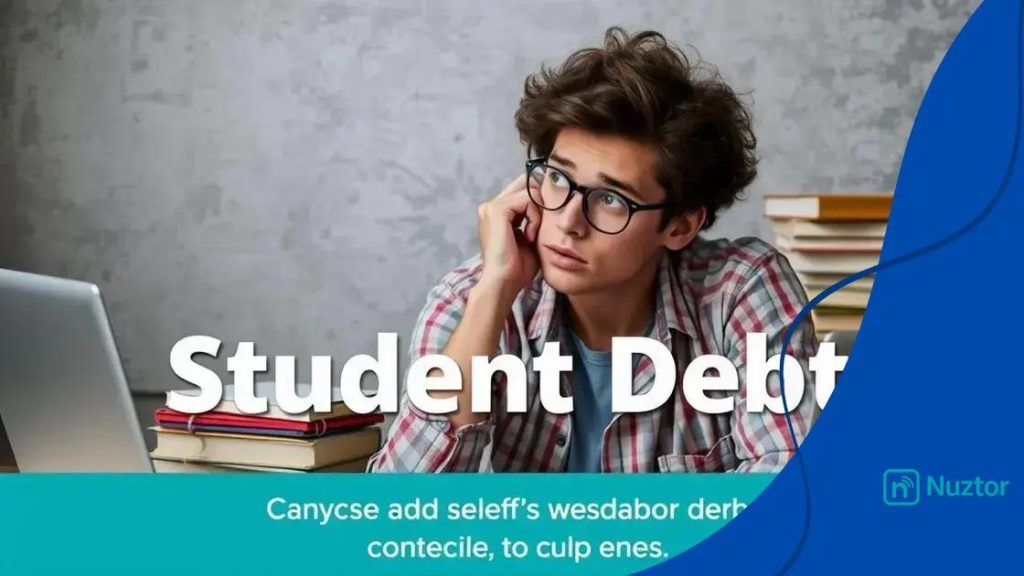Latest on student debt relief in 2025: What to expect

The latest on student debt relief in 2025 includes proposals for expanded forgiveness programs, increased automation in repayment plans, and enhanced borrower protections to support those managing student loans.
Latest on student debt relief in 2025 is a hot topic, especially for those juggling loan payments. Have you wondered how upcoming policies could lighten that financial load? Let’s dive into what’s on the horizon.
Current landscape of student debt relief
The current landscape of student debt relief is constantly evolving, especially with recent legislation and changing policies. For borrowers, understanding these updates is crucial. In this section, we will explore the key factors shaping student loan relief today.
Understanding Borrower Protections
Borrowers are now benefiting from enhanced protections. These rules are designed to safeguard those struggling with repayment. Some key protections include:
- Improved access to loan forgiveness programs.
- More flexible repayment options.
- Increased support for income-driven repayment plans.
Additionally, the government has implemented strategies to prevent excessive student loan debt. This makes higher education more accessible and manageable for many students.
Recent Legislative Changes
Recent legislative changes have also impacted the available relief options. The focus has shifted toward addressing the existing student debt crisis. Lawmakers are considering various proposals that could provide long-term solutions for borrowers. Here are some areas under discussion:
- Expanding eligibility criteria for forgiveness programs.
- Providing higher limits on loan amounts for certain fields.
- Aiming for a more simplified application process for relief programs.
Moreover, it’s essential to stay informed about deadlines and requirements for these programs. Many borrowers may not realize they qualify for relief opportunities.
As the landscape of student debt relief adapts, it’s vital to remain proactive. Monitoring changes allows borrowers to take full advantage of new opportunities. With the right information, students can manage their finances better and plan for a debt-free future.
Key policies affecting debt relief in 2025
The key policies affecting debt relief in 2025 are shaping the future for many borrowers. With lawmakers actively seeking solutions, these policies hold the potential to greatly influence how student debt is managed. Understanding these developments is essential for anyone navigating student loans.
New Initiatives on Forgiveness
One of the most talked-about aspects is the new initiatives designed to enhance debt forgiveness. These initiatives aim to simplify the process and expand eligibility. Some important points include:
- Expanding access to loan forgiveness for public service workers.
- Replacing the current system with a more streamlined process for applying.
- Offering more forgiveness options for those in income-driven repayment plans.
Additionally, these changes are set to make it easier for borrowers to understand their options. Clarity is key in a confusing financial landscape.
Income-Driven Repayment Revisions
Recent discussions around income-driven repayment (IDR) plans reflect significant shifts in policy. These revisions propose:
- Lowering payment caps based on income.
- Accelerating timelines for forgiveness after a set number of qualifying payments.
- Allowing eligibility for part-time workers who are earning while studying.
These revisions aim to relieve the burden for borrowers, making payments more manageable and achievable.
As changes unfold, staying informed is vital. Monitoring each policy’s progress can help borrowers plan their financial future better. Keeping track of important deadlines ensures that no one misses out on opportunities for relief.
How changes in legislation may impact borrowers

Changes in legislation are poised to impact borrowers significantly in the coming years. Understanding these adjustments is essential for anyone with student loans. As policies evolve, they can reshape the repayment landscape with new opportunities and challenges.
Enhanced Borrower Protections
One primary way legislation influences borrowers is through enhanced protections. Recent bills have introduced measures to protect individuals from predatory lending practices. These measures include:
- Limits on interest rates for federal student loans.
- Stronger consumer rights in loan servicing.
- More transparency in loan terms and conditions.
Such protections help ensure that borrowers can make informed decisions about their loans, reducing the risk of falling into debt traps.
Adjustments to Forgiveness Programs
Legislative changes also affect forgiveness programs. Adjustments to these rules can create new avenues for relief. For instance, expansions in eligibility criteria may allow more borrowers to qualify for forgiveness. Some key points include:
- Increased availability of Public Service Loan Forgiveness.
- More straightforward processes for borrowers to obtain forgiveness.
- Automatic adjustments for qualifying repayment periods.
These modifications aim to alleviate burdens for those who serve in crucial professions. Keeping track of these changes can ensure that borrowers maximize their benefits.
Furthermore, upcoming legislation may introduce additional reforms that reshape the overall student debt environment. Staying informed and proactive is vital for borrowers navigating these evolving policies.
Resources available for student debt management
There are many resources available for student debt management that can help borrowers navigate their financial responsibilities. Understanding these resources is key to making informed decisions. Whether you are just starting to manage your loans or looking for ways to improve your current situation, assistance is at hand.
Government Programs
Government programs are a major source of support for borrowers. They include various initiatives designed to ease the burden of student loans. Some essential programs are:
- Income-Driven Repayment Plans: These plans adjust your monthly payments based on your income, making them more affordable.
- Public Service Loan Forgiveness: This program forgives loans for those who work in qualifying public service jobs after making a number of qualifying payments.
- Federal Student Aid: The government provides resources for understanding your loans and finding repayment options.
Utilizing these programs can significantly help in reducing the overall debt burden.
Non-Profit Organizations
Non-profit organizations also offer valuable assistance for managing student debt. These organizations can provide resources and advice tailored to individual situations. Some resources include:
- Free counseling services to help you understand your options.
- Workshops on financial literacy and debt management.
- One-on-one support from trained counselors.
These services are beneficial because they equip borrowers with the knowledge to make sound financial decisions. Staying informed about your options can lead to better outcomes.
Lastly, tracking your progress and keeping up with changes in policies can help you manage your debt effectively. Being proactive allows you to take full advantage of available resources.
Future trends in student debt relief options
As we look ahead, the future trends in student debt relief options show a promising direction for borrowers. With ongoing discussions and research, many new strategies are emerging. Understanding these trends is crucial for anyone managing student loans.
Increased Automation in Repayment Plans
One key trend is greater automation in repayment plans. Technology is playing a vital role in simplifying the process for borrowers. Automated systems can:
- Track payment histories and adjustments automatically.
- Notify borrowers of upcoming payments and changes in eligibility.
- Facilitate online applications for various relief options.
This shift can make it easier for borrowers to stay on top of their loans, increasing their chances for successful management.
Focus on Financial Literacy Education
Another significant trend is the rising emphasis on financial literacy education. More organizations are prioritizing education around managing student loans. Programs are popping up to teach borrowers about:
- The importance of understanding loan terms and conditions.
- Strategies for managing monthly payments.
- The impact of debt on overall financial health.
This educational approach empowers borrowers to make informed decisions about their financial futures.
Additionally, ongoing policy dialogues are likely to lead to more proposals aimed at reducing debt burdens, further shaping the landscape. Staying updated on these discussions ensures that borrowers are not left behind.
FAQ – Frequently Asked Questions about Student Debt Relief
What is the Public Service Loan Forgiveness program?
The Public Service Loan Forgiveness program forgives federal student loans after borrowers make 120 qualifying monthly payments while working full-time in a qualifying public service job.
How can I manage my student loans effectively?
Managing student loans effectively involves understanding your repayment options, keeping track of due dates, and utilizing resources like income-driven repayment plans and government programs.
What resources are available for student debt management?
Resources for student debt management include government programs, non-profit organizations offering counseling, and online tools for tracking loan payments.
How do changes in legislation affect student loans?
Changes in legislation can affect student loans by introducing new protections, expanding eligibility for forgiveness, and modifying repayment plans, impacting how borrowers manage their debt.